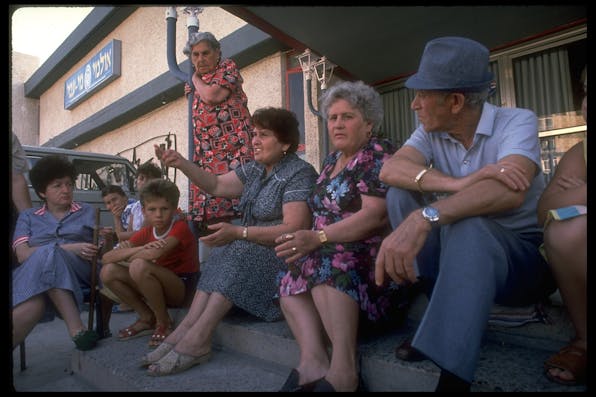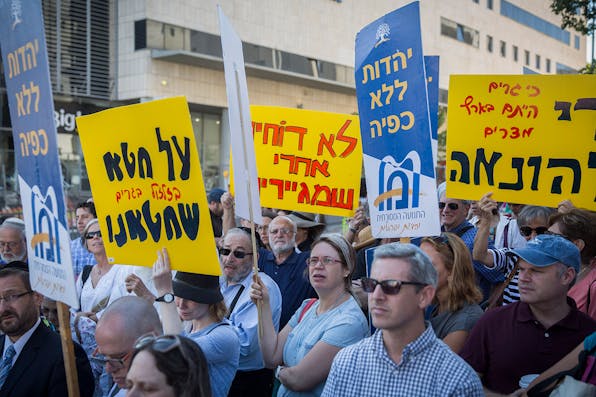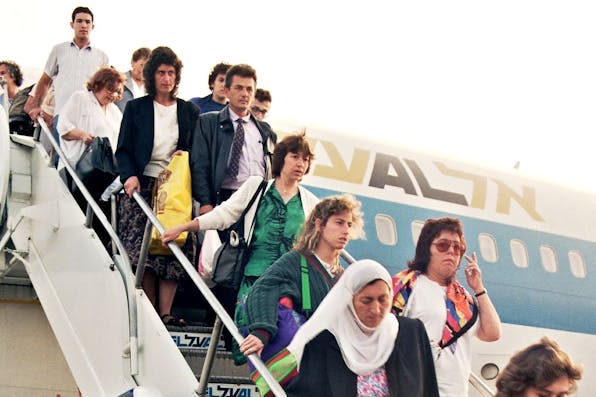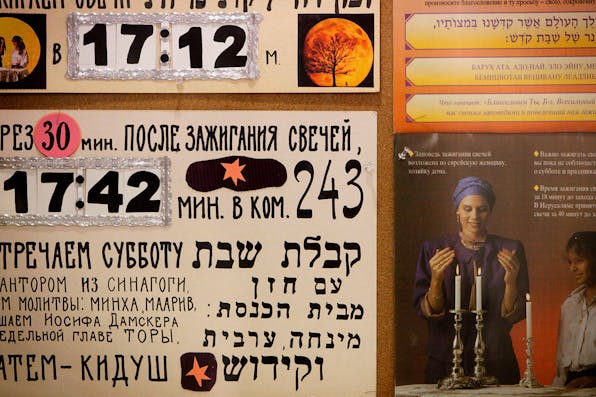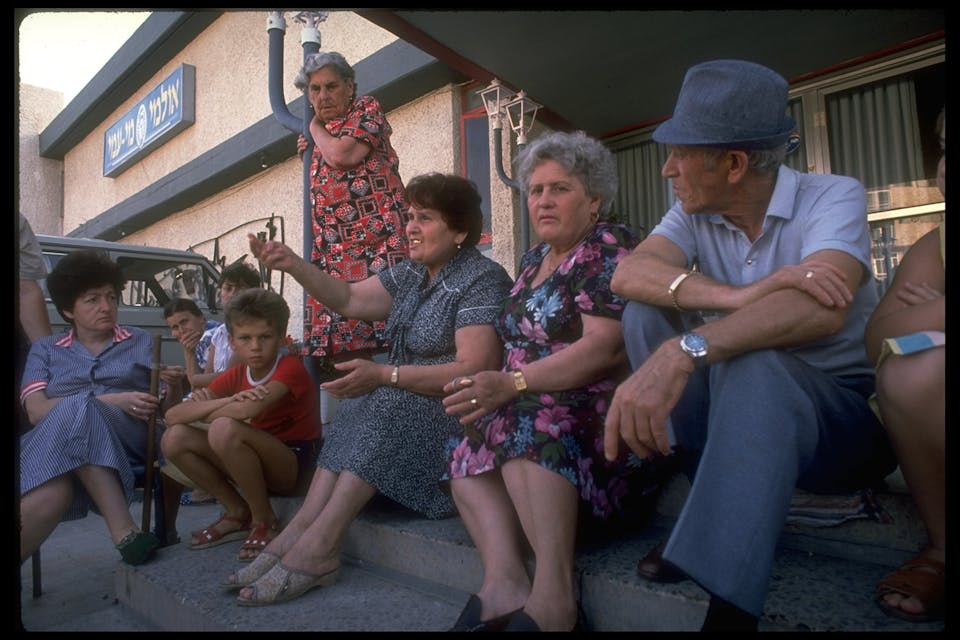
November 9, 2020
The End of the New Jew
Unlike earlier waves of immigrants, the million East Europeans who made their way to the Jewish state in the 1990s managed to escape the cultural strip-mining that awaited them.
The final line—“Israel can no longer be understood without its Russian component, and Israel’s ‘Russians’ can only be understood as a type of Israeli”—of Matti Friedman’s fascinating essay about Israel’s Russian immigrants and their children captures how much they changed Israel, and how much they didn’t. An impressive storyteller, Friedman examines “popular culture as a window into the broader spirit of what’s happened.” But there’s an important ideological tale to tell too, one that he touches on lightly but that deserves full exploration. As Israeli society experienced one Russian revolution after another in the 1990s, one of the nation’s core, founding myths was transformed—even, it’s not too strong to say, rejected.
Since before the founding of the state in 1948, Zionists thought that their movement required bringing in Jews from around the world and putting them through what David Ben-Gurion called “a wholesale revolution in a Jew’s image and his way of life.” Hoping to banish 2,000 years of powerlessness, Ben-Gurion imagined that “With their arrival in their homeland, this human dust (avak adam) living among strangers, dependent on vagrancy and serfdom, coalesces into an independent, national brigade, attached to and rooted in its great history.” He and his peers believed that this Zionist melting pot would save and strengthen the newcomers, not demean them. National redemption would result when each immigrant exorcised the broken, exiled Jew from within and became a proud pioneer.
It was an idea inspired by the 19th-century Russian socialists, who sought to create a “new man.” The Eastern European Socialist Zionists of the Second and Third Aliyah took this idea and made it their own, dreaming of a New Jew freed from the debilitating effects of anti-Semitism and assimilation. And these pioneering Zionists did create an impressive infrastructure of centralized institutions and communal frameworks, like the kibbutz, to forge and serve these New Jews; their centralized, heavily bureaucratic, economic, social, and cultural controls probably offered the fastest route to building the Jewish state as quickly as they did, considering the trying conditions they faced.
